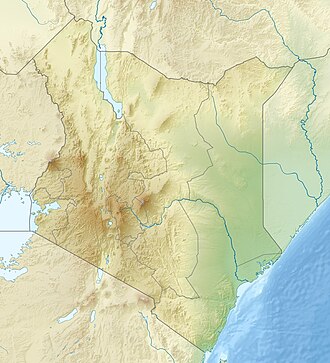| Aberdare National Park | |
|---|---|
 Aberdare Park entrance | |
| Location | Kenya, Nyandarua County & Nyeri County |
| Nearest city | Nyeri |
| Coordinates | 0°25′48″S36°43′57″E / 0.43000°S 36.73250°E |
| Area | 767 km2 (296 sq mi) |
| Established | 1950 |
| Governing body | Kenya Wildlife Service |
The Aberdare National Park is a protected area in the Aberdare Mountain Range in central Kenya located east of the East African Rift Valley. [1] It covers the higher areas and the Aberdare Salient to the east.

